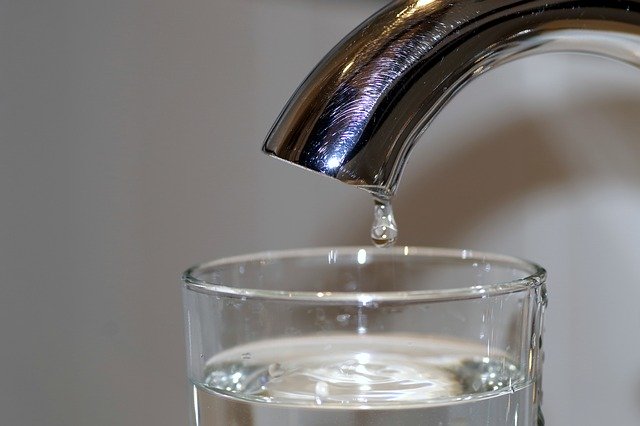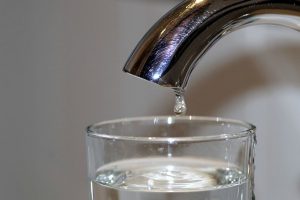New study finds 25% of Americans never drink their tap water due to safety fears and quality issues
- May 18, 2020
- Posted by: administrator
- Category: Water Issues, Water Treatment, North America

 A new study shows that 25% of Americans say they never drink their tap water, with water quality issues, poor mineral content and safety fears continuing to be significant drags on water utility customer satisfaction
A new study shows that 25% of Americans say they never drink their tap water, with water quality issues, poor mineral content and safety fears continuing to be significant drags on water utility customer satisfaction
The findings in the newly released J.D. Power 2020 U.S. Water Utility Residential Customer Satisfaction Study, set the stage for a serious set of customer satisfaction challenges on the part of regional water utilities. The study comes as the Environmental Protection Agency (EPA) moves closer to implementing regulations for PFAS1 (per- and polyfluoroalkyl substances), commonly referred to as “forever chemicals,” in the U.S. drinking water supply.
“A combination of bad taste, bad smell, high mineral content and general fears about water safety are prompting a sizable portion of Americans—particularly in Western and Southern states—to avoid drinking their tap water,” said Andrew Heath, senior director of utilities intelligence at J.D. Power. “Fixing these problems requires a significant focus on infrastructure, both to ensure water quality and to communicate with customers, showing them proof that infrastructure is well maintained and that the water is safe.”
Following are key findings of the 2020 study:
One in four customers never drink their tap water: One-fourth (25%) of residential water utility customers nationwide say they never drink their tap water. Overall customer satisfaction with the local water utility is 52 points lower (on a 1,000-point scale) among customers who never drink their tap water vs. among those who say they always drink their tap water.
Bad taste is hard to swallow: Among specific water quality issues that drive the decision to not consume tap water, the biggest deterrents are bad taste (11%); bad smell (10%); poor clarity (8%); scaling/water hardness (8%); and high lead/mineral content (5%).
Annual water quality report: Water utilities are required to test the tap water and publish an annual Consumer Confidence Report to reassure their customers that it’s safe to drink. Unfortunately, only 40% of customers recall seeing or receiving this report but, when they do, 80% of them then say they drink the tap water.
Household water use increases during COVID-19, but misinformation persists: Water consumption has increased significantly during the COVID-19 pandemic, with 36% of households saying they are consuming more water than they did previously, which includes drinking 18% more glasses of water and doubling the number of times they wash their hands. Despite evidence to the contrary provided by the Centers for Disease Control, 41% of water utility customers across the country express concern regarding the transmission of COVID-19 through their drinking water supply.
Proactive communications have powerful effect, but few utilities deliver: Overall satisfaction scores are 106 points higher when customers recall receiving four or more proactive communications from their utility (e.g., phone call, email, text message or social media message) than when customers do not recall a proactive communication.
Despite the powerful effect proactive communications have on customer satisfaction, just 5% of water utility customers recall receiving four or more communications from their utility. Less than one-third (30%) of customers recall receiving any communications from their water utility.
Digital shows promise in closing communications gap: Across electric, gas and water utilities, customer satisfaction improves significantly when customers use their utility’s mobile apps and websites. Overall satisfaction among utility customers using digital only channels is 788, compared with 754 among those who use the phone only and 715 among those who have no interaction.
Study Rankings by Region
The study measures customer satisfaction with water utilities in eight geographic regions. Highest-ranking utilities and scores, by region, are as follows:
- Midwest Large: Illinois American Water (764)
Midwest Midsize: City of Minneapolis (757)
Northeast Large: NYC Environmental Protection (778)
Northeast Midsize: Monroe County Water Authority (774)
South Large: Gwinnett County (781)
South Midsize: Orange County Utilities (789)
West Large: Seattle Public Utilities (764)
West Midsize: Irvine Ranch Water District (752)
Now in its fifth year, the U.S. Water Utility Residential Customer Satisfaction Study, measures satisfaction among residential customers of 90 water utilities that deliver water to at least 400,000 customers and is reported in four geographic regions and two size categories: Midwest Large, Midwest Midsize, Northeast Large, Northeast Midsize, South Large, South Midsize, West Large and West Midsize.
Overall satisfaction is measured by examining 33 attributes in six factors (listed in order of importance): quality and reliability; price; conservation; billing and payment; communications; and customer service.
